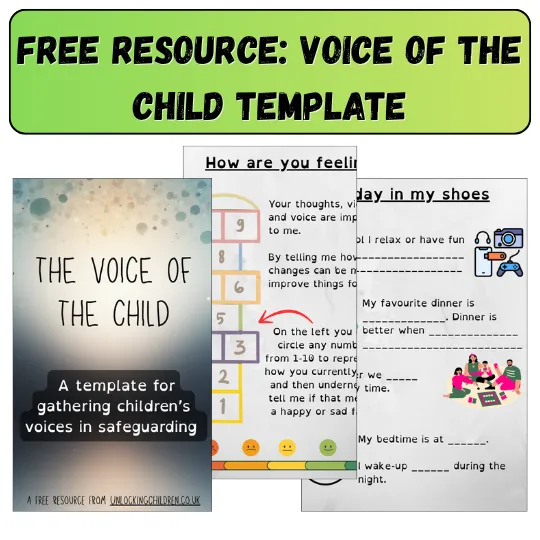Introduction: Supporting Traumatised Youth When Parents Are Not Transparent
Youth Trauma, Parental Opacity, and Professional Support
Adolescent trauma, parental opacity, and professional support systems converge to form a critical challenge in child and adolescent mental health. Traumatic experiences in youth can profoundly disrupt development, emotional wellbeing, and mental health. Yet the road to recovery often hinges on the cooperation of parents or primary caregivers, figures who are vital to a young person’s healing journey. When these adults are not forthcoming or transparent with professionals, the pathway to appropriate support becomes obstructed.
This phenomenon—here termed parental opacity—may arise from a range of complex and overlapping factors: fear of judgement, shame, distrust of services, or the presence of their own unresolved trauma. Cultural values, previous negative experiences with professionals, or anxieties about child protection interventions may also contribute.
As a result, practitioners such as therapists, social workers, and educators are left to navigate a fragmented landscape, working to understand and support traumatised young people while facing partial, withheld, or misleading information from the family system.
Addressing the Complexities of Obstructed Care Pathways
This article argues that parental opacity constitutes a significant barrier to the timely and effective support of traumatised young people. By distorting the young person’s lived experience and obstructing accurate professional assessment, it undermines both diagnosis and intervention.
The article will explore the layered impact of non-disclosure on children and the professionals supporting them, examining the ethical tensions and boundary challenges that emerge in such cases. It will also present practical strategies for engaging resistant family systems and adapting therapeutic work in contexts of limited parental collaboration.
Ultimately, the article advocates for a multi-faceted approach—one that empowers young people directly, adjusts interventions for constrained environments, and drives systemic improvements in professional training, policy development, and inter-agency coordination to better support this vulnerable population.
Trauma’s Impact on Adolescents and the Role of Parents

The Multifaceted Impact of Trauma on Adolescent Development
Trauma experienced during adolescence can significantly disrupt neurobiological, psychological, and social development. Events such as abuse, neglect, exposure to violence, bereavement, or serious accidents can induce profound and lasting changes in brain structure and function—particularly in regions responsible for emotional regulation, stress response, and cognitive processing, including the prefrontal cortex, amygdala, and hippocampus.
Psychologically, traumatised adolescents may display symptoms consistent with Post-Traumatic Stress Disorder (PTSD), including intrusive thoughts, avoidance behaviours, negative shifts in mood and cognition, and heightened arousal or reactivity. These presentations often overlap with other mental health conditions such as depression, anxiety disorders, or Attention Deficit Hyperactivity Disorder (ADHD), complicating assessment and treatment.
On a social level, trauma can impede a young person's ability to form trusting relationships, affect academic engagement, and contribute to social withdrawal or risk-taking behaviours. The cumulative effect of these challenges can severely hinder a young person’s emotional resilience, sense of identity, and developmental trajectory.
Conceptualising Parental Non-Transparency: Aetiology and Systemic Influences
Parental non-transparency, or opacity, in the context of professional support for traumatised young people is a complex, multi-determined phenomenon. Root causes may include fear of being judged, shame linked to family dysfunction or trauma, or anxiety surrounding potential involvement from child protection services. Some parents may carry their own histories of unresolved trauma or adverse experiences with professional systems, leading to deep mistrust and avoidance behaviours (Galbally et al., 2019).
Cultural norms also play a role. Beliefs about family privacy, honour, or mental health stigma can discourage open dialogue with external professionals. Systemic pressures—such as involvement with the legal system, immigration processes, or historical surveillance by authorities—can further reinforce protective secrecy.
In some cases, parents may genuinely believe they are shielding their child or family from harm by withholding information. In others, a lack of awareness or insight into the nature and impact of the trauma may lead them to minimise or misrepresent their child’s experiences.
Regardless of the motivation, this opacity complicates the work of professionals and delays effective intervention for the young person.
How Parental Non-Disclosure Affects Traumatised Youth

Distortion of Lived Experience: The Young Person's Silenced Narrative
When parents withhold or alter information, one of the most profound consequences is the distortion, or outright silencing of the young person’s lived experience. Parental opacity can manifest as denial of the trauma, minimisation of its impact, or the delivery of a misleading version of events to professionals. This not only invalidates the young person’s reality but can also create internal conflict and confusion.
In such circumstances, young people may feel pressured to conform to the parental narrative, even when it contradicts their own memories or emotional truths. This dynamic can lead to self-doubt, isolation, and a deep sense of betrayal—especially when their primary attachment figures dismiss or ignore their pain.
Without validation from caregivers or professionals, the adolescent’s ability to process the trauma is severely hampered, leaving them trapped in a reality where their story remains unheard and unsupported (van der Asdonk, Cyr and Alink, 2020).
Barriers to Accurate Assessment, Diagnosis, and Intervention
A lack of parental transparency creates significant barriers from the outset of professional involvement. Comprehensive assessments rely heavily on background information provided by caregivers. When that information is incomplete, minimised, or intentionally misleading, professionals may be left with a fragmented or skewed understanding of the child’s circumstances.
This can result in misdiagnoses—mistaking trauma-related symptoms for other conditions such as ADHD or conduct disorders, particularly due to overlapping behavioural presentations. Consequently, interventions may be misaligned or ineffective.
Trauma-informed care models are most successful when built upon a clear understanding of the nature, timing, and impact of traumatic experiences. Parental opacity disrupts this foundation, leading to delayed or inappropriate support, prolonged distress for the young person, and missed opportunities for healing.
Ethical and Safeguarding Dilemmas in Parental Non-Transparency
The Tightrope of Confidentiality, Information Sharing, and Safeguarding Obligations
Professionals working with traumatised young people whose parents are non-transparent must navigate a highly complex ethical landscape. Confidentiality is a cornerstone of therapeutic and supportive work, particularly when building trust with adolescents. However, this must be balanced with safeguarding responsibilities and legal requirements for information sharing.
Parental opacity intensifies this tension. When professionals suspect undisclosed trauma, abuse, or neglect, they may face the difficult decision of breaching confidentiality to protect the child—potentially damaging any developing rapport with the family. Determining what information to share, with whom, and at what point requires careful ethical judgement. These decisions must prioritise the best interests of the young person, even when the available information is partial or potentially distorted (Schultz et al., 2010).
The dilemma is especially acute when parents hold legal decision-making power over their child’s care but are resistant to, or suspicious of, professional involvement. The need to act in the child’s best interests often collides with practical limitations on autonomy, especially for younger adolescents.
Maintaining Professional Integrity and Therapeutic Relationships in High-Stakes Contexts
Working within these constrained and emotionally charged dynamics demands a high level of professional integrity and resilience. Practitioners may find themselves pulled between advocating for the young person’s wellbeing and attempting to maintain constructive engagement with resistant or defensive parents.
If professionals are seen as threatening or judgmental, parents may withdraw from services altogether—potentially cutting off support to the young person. Yet avoiding difficult conversations for fear of alienating the family risks colluding with an inaccurate or harmful narrative. Inadvertent alignment with parental denial or minimisation can further silence the child and undermine trust.
Maintaining therapeutic boundaries, clarifying professional roles, and consistently reinforcing the young person’s right to be heard are essential. While this work is emotionally taxing—often involving moral distress and the risk of burnout—it also reflects the heart of safeguarding: prioritising the voice, needs, and safety of the child, even in the face of systemic and relational complexity.
Strategies for Working with Resistant or Uncooperative Parents

Building Trust and Rapport in the Face of Parental Ambivalence or Hostility
Establishing rapport with parents or caregivers who exhibit resistance, defensiveness, or outright hostility is a foundational—but often difficult—task for professionals. These families may have experienced previous trauma, systemic discrimination, or negative encounters with services, which inform their mistrust. A non-judgemental, empathic approach is therefore essential.
Professionals should seek to validate parental concerns without endorsing misinformation, and create space for open dialogue about their fears, perceptions, and expectations. Acknowledging the challenges they face—such as feeling overwhelmed, blamed, or misunderstood—can help de-escalate tension and shift the dynamic from adversarial to collaborative (Miller et al., 2020).
Emphasising shared goals, particularly the wellbeing and recovery of the young person, provides a neutral starting point. Being transparent about professional roles, the limits of confidentiality, and the reasons for involvement can further reduce parental anxiety. While trust may take time to build, consistent communication, clear boundaries, and respectful persistence can foster a more constructive relationship over time.
Indirect Assessment Techniques and Communication Strategies with Parents
When direct communication yields limited or unreliable information, professionals must adopt alternative strategies to build an accurate picture of the young person’s experiences. Collateral information from other sources—such as schools, general practitioners, youth workers, or extended family—can provide valuable insight, as long as appropriate consent and ethical standards are observed.
Observations of parent-child interactions during appointments or home visits can also reveal relational patterns, attachment dynamics, and behavioural cues that might otherwise go unreported. Where appropriate, professionals may use structured tools or checklists to document behaviours over time.
Communication with resistant parents requires tact and intentionality. Rather than confronting inconsistencies directly—which can trigger defensiveness—practitioners may use motivational interviewing techniques to gently explore discrepancies and encourage reflection. Psychoeducation around trauma’s impact on behaviour, learning, and mental health can help parents connect their child’s difficulties to underlying needs rather than perceived defiance.
Even small shifts in parental understanding can open the door to greater collaboration. Framing the professional relationship as a partnership aimed at supporting their child’s future may soften opposition and lead to deeper engagement over time.
Direct Trauma Support for Adolescents in Complex Family Systems
Fostering Youth Agency and Voice within Limited Disclosure Environments
Even in the absence of parental transparency, professionals can centre their work on empowering the young person. When a child’s experiences are denied or dismissed by caregivers, therapeutic spaces become even more critical as places where their voice is heard and validated.
Creating a safe, consistent, and confidential environment allows adolescents to explore their feelings, make sense of their experiences, and begin to build a coherent personal narrative. Approaches that promote self-expression—such as narrative therapy, journaling, creative arts, and mindfulness-based practices—can be especially effective in enabling young people to externalise distress and reconnect with their internal strengths (McManus and Thompson, 2008).
Validating the young person’s perceptions, even when they conflict with the family narrative, affirms their sense of self and helps counter feelings of shame, isolation, or self-blame.
Therapeutic work in these contexts should focus on building resilience, supporting emotional regulation, and enhancing self-efficacy, equipping the young person with tools to navigate both their inner world and external challenges.
Adapting Trauma-Informed Interventions for Incomplete Parental Collaboration
Many evidence-based trauma interventions are designed with an assumption of active parental involvement. However, in contexts marked by opacity or resistance, these models must be flexibly adapted.
For instance, Cognitive Behavioural Therapy (CBT) often includes parental psychoeducation and support with behavioural strategies. In cases where this is not possible, the therapist may need to focus more intensively on the adolescent’s individual skill-building—targeting emotional regulation, trauma processing, and coping techniques they can implement independently.
Similarly, Eye Movement Desensitization and Reprocessing (EMDR) has been shown to be effective in helping young people process trauma, even without parental participation, provided the therapeutic relationship is strong and carefully contained (Guidetti et al., 2023).
Adaptations might also include addressing the ongoing stress of living in a family system that invalidates their experiences. This can involve supporting the young person to manage difficult family interactions, identify safe allies within their wider network, and explore alternative sources of relational support. The emphasis shifts from family-systemic change to strengthening the adolescent’s internal resources and psychological safety.
Systemic Gaps in CAMHS and Multi-Agency Practice
Systemic Deficiencies in CAMHS and Social Care Responses
Parental non-transparency does not occur in a vacuum—it interacts with, and is often compounded by, systemic deficiencies within Child and Adolescent Mental Health Services (CAMHS), social care, and allied sectors. Long waiting times, high thresholds for service access, underfunding, and workforce shortages severely constrain the capacity for sustained and meaningful engagement with complex family systems (Bright et al., 2010).
Practitioners working with families affected by trauma and opacity often require more time, flexibility, and specialist supervision than standard pathways allow. However, the reality is that stretched services frequently prioritise crisis management and rapid throughput, leaving little room for the intensive relational work required to build trust with resistant parents or conduct nuanced assessments.
Additionally, fragmented service delivery across health, education, social care, and the voluntary sector means that crucial insights are often siloed. Inconsistent communication and incompatible record systems can result in missed opportunities for early intervention, duplicated efforts, or contradictory messaging.
The structural pressures of performance targets and bureaucratic demands can unintentionally deprioritise the bespoke, trauma-informed approaches that these cases require.

Developing Integrated Multi-Agency Responses to Complex Cases
Given the intricacy of cases involving traumatised youth and parental opacity, no single agency can provide adequate support in isolation. Integrated, multi-agency collaboration is not optional—it is essential.
Effective partnership working involves more than information sharing; it requires a shared language, unified values, and jointly owned care plans. This includes regular multi-agency meetings where practitioners can pool knowledge, assess risk comprehensively, identify protective factors, and develop coordinated intervention strategies (Reynolds and Bacon, 2018).
Clear protocols are needed to support ethical and lawful information exchange, especially when parental opacity is masking risk. Joint training opportunities can foster a consistent understanding of trauma-informed practice and engagement strategies across agencies. Importantly, multi-agency models also offer emotional and professional support to practitioners, who often carry a heavy emotional burden when working in isolation with these high-risk, emotionally complex cases.
Ultimately, integrated models not only improve outcomes for the child but reduce fragmentation, professional drift, and burnout. They offer a scaffold through which both young people and practitioners can find consistency, clarity, and collective purpose.
Recommendations: Practice, Policy and Training Solutions
Recapitulating the Challenges and Core Strategies
Supporting traumatised young people becomes profoundly more complex when parental transparency is compromised. In such contexts, the child’s lived experience may be denied, distorted, or silenced—undermining their sense of reality and impeding psychological recovery. Professionals face significant challenges in assessment, diagnosis, and intervention, all while navigating ethical dilemmas around confidentiality, safeguarding, and professional boundaries.
Despite these barriers, effective strategies do exist. Building rapport with guarded caregivers, using indirect assessment techniques, and employing trauma-informed communication can create openings for engagement. Most importantly, professionals must prioritise direct therapeutic work with the young person—validating their voice, fostering agency, and adapting interventions to suit environments where family collaboration is limited.
The need for collaborative, integrated support structures cannot be overstated. Multi-agency models offer the most robust framework for responding to the multifaceted needs of these young people and countering the systemic constraints that professionals so often face.
Advocating for Systemic Change: Training, Policy, and Research
To address these challenges sustainably, systemic improvements must be prioritised across three key domains:
- Enhanced Professional Training
There is an urgent need for training that equips professionals with the tools to engage resistant families, manage ethical dilemmas, and adapt trauma-informed practices for constrained environments. Training should be interdisciplinary and include real-world case analysis, reflective supervision models, and emotionally intelligent engagement strategies (Hutson, Kelly and Militello, 2017).
- Policy Reform and Resource Allocation
Policies must support ethical and effective information-sharing between services, always centring the child’s welfare. Funding should be directed toward increasing the flexibility and duration of support offered to complex cases. Service pathways must be restructured to allow more time for trust-building and sustained intervention when working with families affected by trauma and mistrust.
- Future Research Priorities
Further research is needed to evaluate the long-term impact of parental opacity on child development, as well as the efficacy of adapted therapeutic approaches in such settings. Longitudinal studies could help identify protective factors that enable young people to thrive despite non-disclosure environments. Research should also explore the emotional impact on professionals working in these ethically fraught contexts and develop models of supervision and support accordingly.


